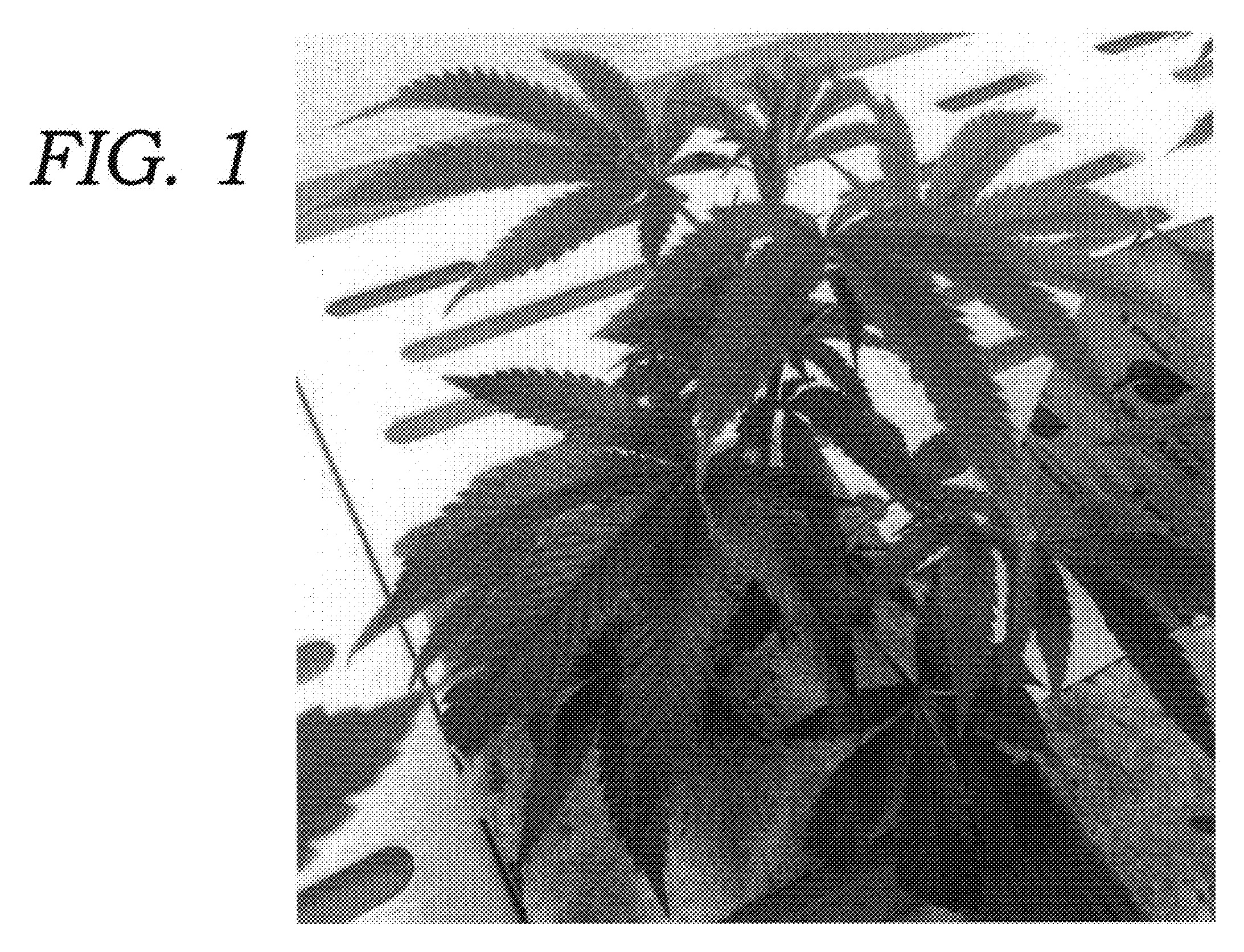U.S. Patent No. PP30,668 P3 (‘668) issued on July 9, 2019, for “Cannabis Plant Named ‘DD-CT-BR5’.” It was issued to inventor David Holmes of San Gabriel, California. The applicant/assignee is Cannagen, LLC, of San Gabriel, California. This patent is a plant patent under 35 U.S.C. §161, which protects new and distinct cultivars of plants. According to the specification, the Latin name is hybrid Cannabis indica L. and the varietal denomination is ‘DD-CT-BR5’ (MPEP 1601).
Figure 3 below illustrates the plant ‘DD-CT-BR5’.

For plant patents, the utility requirement under 35 U.S.C. §101 is replaced with distinctiveness, and the ‘668 patent’s distinctiveness over the prior art as described in the specification is shown as:
Because the ‘LW-BB1’ is a clone of two other cultivars, ‘DJ Short’s Blueberry’ and ‘Black Berry Kush’, it exhibits traits similar but distinctive from the parents. Namely:
- Flowers which have green to light green bracts with purplish hues and dark green leaflets. The stigmas protruding from the bracts are a reddish orange color.
- The plant produces more than one unflorescence.
- The plants can be propagated economically and uniformly using asexual means such as cloning or tissue culture.
- The plant has a high flower yield per square foot of canopy.
All plant patents have a 20 year term, and the ‘668 patent expires on September 15, 2037 (MPEP 2701).
The Cooperative Patent Classification is A01H (new plants or processes for obtaining them; plant reproduction by tissue culture techniques).
The ‘668 patent is only the second plant patent issued for a new cannabis cultivar. Plant patents are a unique type of patents issued by the USPTO, although only a very small number (about 1%) are actually issued each year. Keep in mind the plants not only must be distinct, but also new, which means they must invented (i.e., man-made or genetically modified), and asexually reproducible (i.e., not through seed propagation). Plant patents represent a facsinating area under U.S. patent law.
Please contact Yonaxis for more information on plant patents, or patents in general, if you have any questions.
